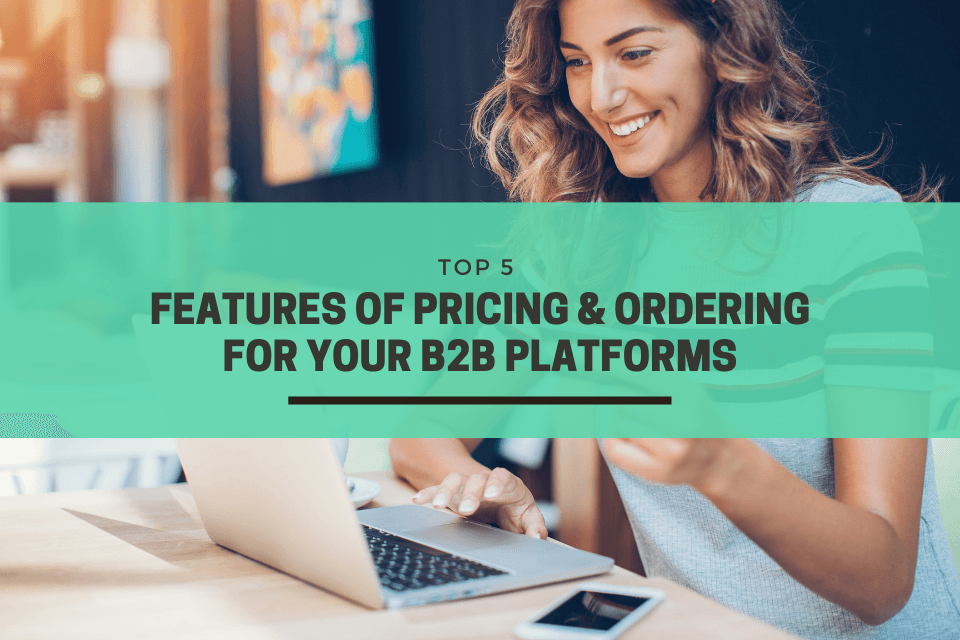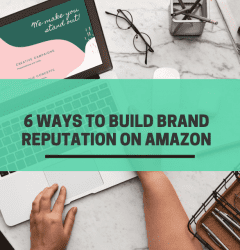This website uses cookies so that we can provide you with the best user experience possible. Cookie information is stored in your browser and performs functions such as recognising you when you return to our website and helping our team to understand which sections of the website you find most interesting and useful.
- Email: growth@growisto.com
- Phone: +1 628-280-9076
09 Sep

Top 5 Features of Pricing & Ordering for Your B2B Platforms
In the field of eCommerce, customer preferences are constantly changing and adjusting in accordance to the digitalization trends. B2B customers are no different. Infact, just like B2C buyers, more and more B2B customers are also shopping online these days and are looking for a more streamlined and personalized shopping experience.
Therefore, whether your customers are retailers, distributors or other companies, it is crucial for B2B companies to now focus on digital sales channels and online customer experience. This not only helps you in increasing your sales, but also reduces your cost of order processing and helps you free-up the time of your sales team which can focus on new customer acquisition.
To successfully address the needs of their buyers, B2B sellers need to equip their websites with vital features to stand out in the current eCommerce landscape.
In this blog, we are going to deep-dive into some of the key features related to Ordering, Pricing and Quote Management, based on our experience of building B2B platforms:
1. Customer level pricing -
B2B pricing models can be quite complex as they are unique for each customer. The pricing depends on various factors such as purchasing volume, pre-negotiated discounts, frequency of purchasing, etc. Therefore, your website must be designed in such a way that it creates customized price lists for each customer on the basis of the various factors including the one mentioned above. You could even make certain products visible only for certain customer groups.
It is recommended to provide the right number of pricing options for your unique buyer personas. For example: You may want to introduce a percentage off for a certain group of customers, while for others you might enable an override price on certain products.
2. Quick Order based on SKU or Item ID -
Placing large orders with multiple SKUs can become tedious and time consuming for the customers. Therefore, it is crucial to simplify this cumbersome task by optimizing the checkout process with the necessary built-in functionalities.
In order to simplify this task, you should provide them with a bulk ordering form that enables the buyers to add products by item ID, part number or SKU. Moreover, they should be able to specify the quantity they want for each of the items. Once the bulk ordering form is completed, the customer must be taken directly to the checkout page in order to streamline and expedite the checkout process.
3. Volume discounts -
B2B buyers tend to place orders for items in bulk rather than individually. While your products can be listed in the form of multi packs, cases, or pallets, it is recommended to provide additional discounts depending on the total quantity to be ordered or the total order amount. Your eCommerce portal must include a way to accommodate such quantity thresholds. Make sure that your sales channel and pricing structure also allow you to apply these discounts.
Sometimes, you may want to offer the quantity discounts in tandem with the customer specific pricing levels. For instance: offering the same discount to a B2B customer who purchases 10 TV Sets as well as one to someone who purchases 1000 TV Sets does not make sense. In such cases, you must also have the functionality to specify different discount tiers depending on the customer groups and segmentation you have assigned.
4. Flexible payment options -
Another feature that highly appeals to B2B buyers is the convenience of flexible payment methods. B2B websites must include digital payment modes such as Credit Cards, Bank transfers, PayPal, and also offline modes like PO, ACH (Automatic Clearance House), Corporate Accounts, On-account Credit Lines, etc.
For instance: Under flexible offline payment methods, one option could be to complete the order and allow the client to pay for it within 30 days of completing the transaction, using the Order ID. Your eCommerce portal must have the functionality to accommodate such options.
By offering varied flexible payment options, you would enable more entities to work with you.
5. Minimum order quantity -
Since bulk purchases are a typical feature of B2B businesses, the eCommerce portals must have minimum order quantity thresholds specified for their products. The order will get placed or the item will be added to the cart only if the customer orders at least that specified minimum quantity. MOQs allow suppliers to increase their profits, while getting rid of more inventory faster.
For instance: You are selling tennis balls. For retail or B2C customers, you sell one pack for $15. For B2B customers, you sell the same pack for $8 with an MOQ of 100 packs.
Depending on the nature of your business, some of the features you can include on your B2B website could be:
i) Minimum order quantity for a specific product
ii) Minimum order amount for order eligibility
iii) Product multiples for items that are sold in cases, packs, pellets
You must also ensure that you communicate these limits clearly on your product pages, so that your customers are not disappointed if they fall under the threshold and start abandoning baskets and checkouts unnecessarily.
6. Quote management -
In order to simplify the ordering process and deal with huge quantities, you must implement the ‘Request a Quote’ facility on your website. This option will automate the manual quotation process and save significant time for both the merchant and the buyer in finalizing a deal. It also helps the brand with better maintenance and tracking in the long run. With an easily accessible ‘Request a Quote’ feature, buyers can easily request for quotes for their orders – preferably by filling up a form with SKUs or Item numbers.
All in all, the above mentioned features are vital to help you cater to the needs of your B2B clients, and provide them with a seamless experience online.
Related Post
Industries Served
United States
India








